Sigma C 150-600 mm f/5-6.3 DG OS HSM
4. Image resolution
Let’s check how the tested Sigma compares here. The performance in the frame centre at 150, 300, 450 and 600 mm is presented in a form of a graph below.
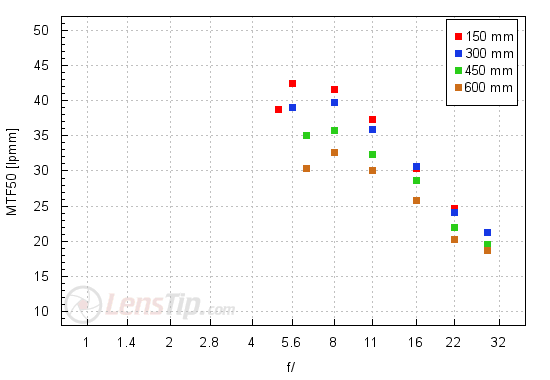
Please Support UsIf you enjoy our reviews and articles, and you want us to continue our work please, support our website by donating through PayPal. The funds are going to be used for paying our editorial team, renting servers, and equipping our testing studio; only that way we will be able to continue providing you interesting content for free. |
- - - - - - - - - - - - - - - - - - - - - - - - - - - - - - - - - - - - - - - - - - - - - - - -
You can notice at once that the focal lengths from 150 to 300 mm perform the best – in their case the results are really brilliant for a lens with such a wide focal range. Already at the maximum relative aperture the MTFs go as high as near 40 lpmm and on stopping down they can reach about 43 lpmm. After passing to the 450 mm focal length the image quality decreases but even there the values hovering around 35 lpmm should be called good.
Like in the majority of instruments of that type the maximum focal length is also the most problematic one. Still we must emphasize the fact that even by f/6.3 the MTFs still slightly exceed 30 lpmm so the image quality can be called acceptable. It’s a pity, though, that on stopping down the aperture to f/8-11 the sharpness doesn’t increase over 33 lpmm.
Of course a comparison with a similar performance of the Tamron 150-600 mm should be presented here as that lens is almost the tested Sigma’s twin when it comes to the parameters and the price. In order to make such a comparison easier we published a graph which shows the difference between MTFs of the Sigma and the Tamron at every combination of focal length and aperture. A positive result means the Sigma is better, a negative result means the Tamron prevails.
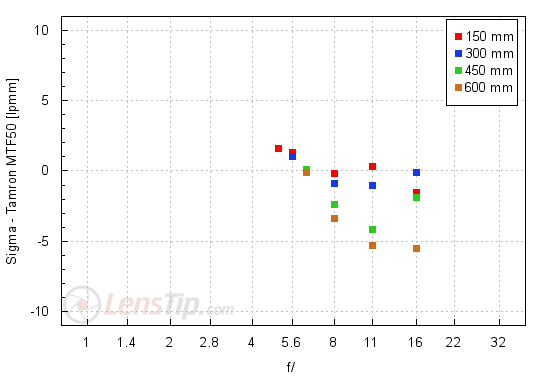
It is noticeable that the Sigma wins by a small margin at the shorter end of the focal range, especially near the maximum relative aperture. At the longer end the Tamron is able to perform better in that duel but its advantage is no bigger than about 5 lpmm. It is also clear what you get for almost two times more money if you decide to buy the Sigma Sport 150-600 mm; that lens was able to reach 38 lpmm at the maximum focal length…
Now let’s check the situation on the edge of the APS-C sensor.
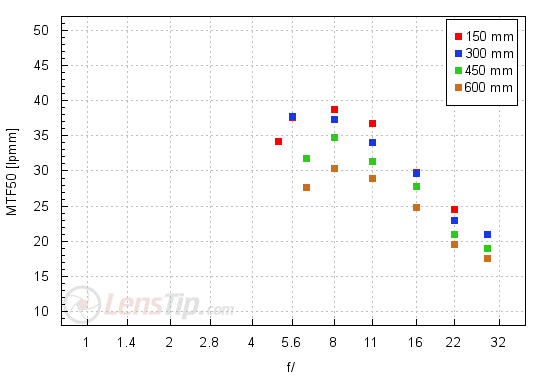
A nice surprise awaits you here because the image quality is good practically across the whole range. From 150 to 450 mm even the maximum relative aperture can provide useful images and on stopping down the aperture the lens is even able to get to 38 lpmm. Only the maximum relative aperture at the maximum focal length lands below the decency level but after stopping down to f/8.0 that problem disappears. What’s interesting here the Sigma seems to fare a bit better than the Tamron.
Let’s progress to analyzing the performance on the edge of full frame.
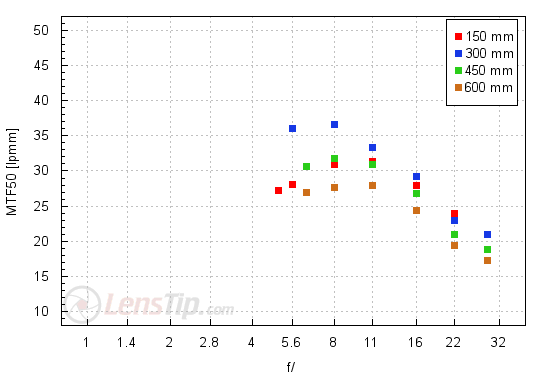
The 300 mm focal length fares very well indeed; we also don’t have any serious reservations concerning the 450 mm. In the case of the 150 mm the areas near the maximum relative aperture fail short of our expectations a bit but fortunately you can enjoy more or less sharp images already from f/8.0. The maximum focal length is the weakest – even stopping down doesn’t allow you to reach an acceptable image quality.
Still it should be emphasized that the results, presented by us above, are noticeably better than those of the Tamron 150-600 mm which on the edge of full frame was barely able to exceed a level of 30 lpmm - only at few combinations of apertures and focal lengths it managed to do that.
It seems the results of our resolution test are inconclusive as they don’t make a choice between the Sigma and the Tamron any easier. It is true that the Sigma fares a bit better on the edge of the APS-C sensor and noticeably better on the edge of full frame but in the frame centre, at the very important longer end of the focal range, the duel is actually won by the Tamron…
At the end of this chapter we traditionally present crops taken from photos of our resolution testing chart which were saved as JPEG files.
| Canon 5D MkIII, JPEG, 150 mm, f/5.6 |
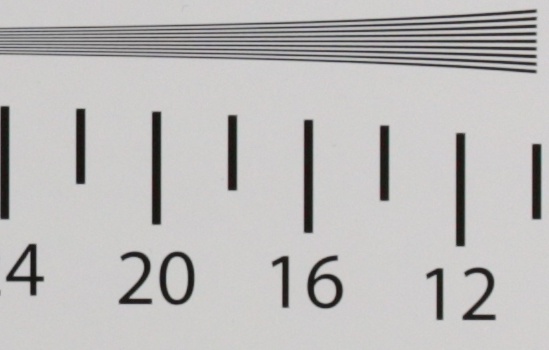 |
| Canon 5D MkIII, JPEG, 600 mm, f/6.3 |
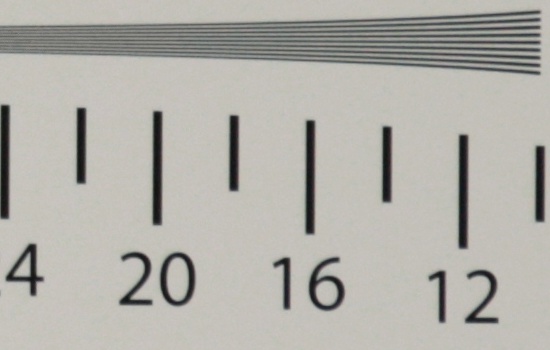 |






